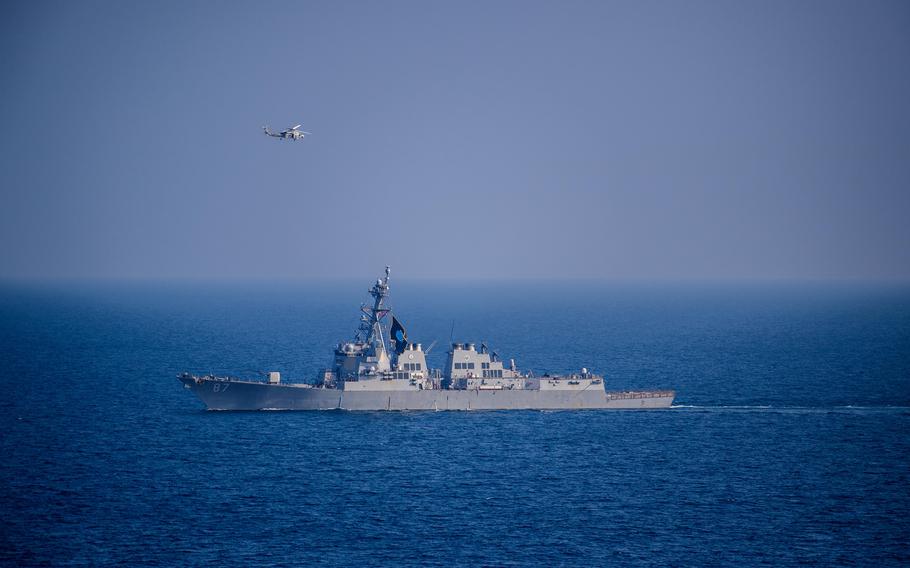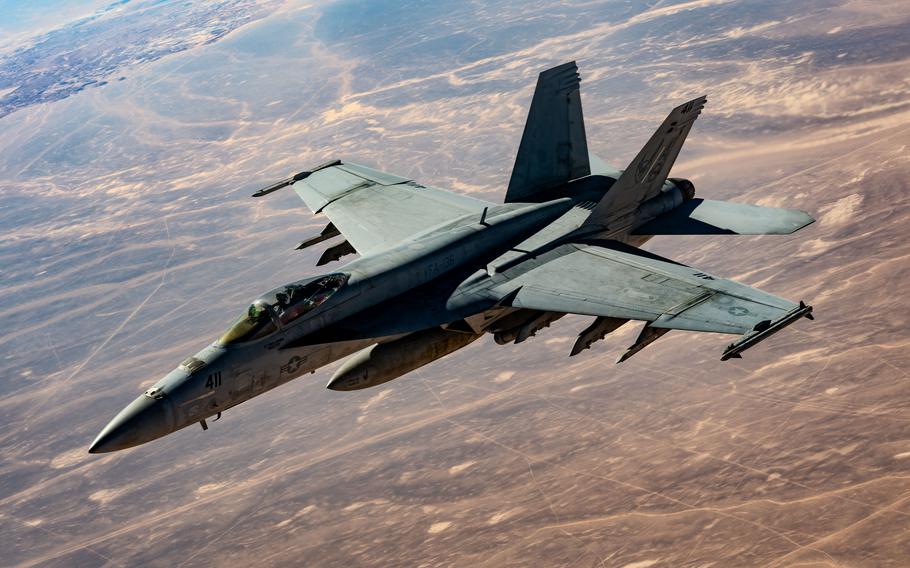
The destroyer USS Mason sails in the Gulf of Aden in 2023. A budding alliance between al-Shabab in Somalia and Yemens Houthis could have implications for security through a commercial shipping choke point connecting the Gulf of Aden and the Red Sea, according to a report by the Center for Strategic and International Studies. (Samantha Alaman/U.S. Navy)
Africa’s most lethal terrorist organization is expected to gain strength in Somalia, raising the security threat through a Middle East choke point for commercial shipping, a new report cautions.
Somali militant group al-Shabab is poised to take advantage of its budding alliance with Yemen’s Houthi rebels, a team-up that could allow the former to attack vessels with drones or even missiles, according to a global terrorism threat assessment by the Center for Strategic and International Studies.
The report, which was published Friday, called al-Shabab a de facto state and a “direct threat” to U.S. interests that is “likely to grow more capable in 2025.”

A U.S. Navy F/A-18E Super Hornet, assigned to the Harry S. Truman Carrier Strike Group, flies a mission over the U.S. Central Command area of responsibility, March 2, 2025. Truman has been part of strikes in Yemen against Houthi militants, who researchers say are allying with al-Shabab in Somalia. (Jackson Manske/U.S. Air Force)
Citing a senior aide to the leader of an anti-Houthi coalition known as the National Resistance Front, it said the group intends to supply al-Shabab fighters with more advanced weapons to give them the capability to target ships transiting the Gulf of Aden.
“The Houthis could provide, and potentially already are providing, Al Shabab with some of the benefits of state sponsorship,” in the area of military training and drone technology, the report said.
For over a year, U.S. warships have been battling the Iran-backed Houthis in an effort to stop the group from launching strikes at commercial ships.
The militants in Yemen have fired on commercial and military shipping in the Red Sea since shortly after the Hamas attack on Israel in October 2023, starting the war in Gaza.
The Houthis maintained that they were targeting ships linked to Israel or its allies, most notably the U.S. However, many of the ships attacked had little or no connection to the conflict.
Should al-Shabab enter the fray, that could complicate the effort to free up shipping lanes that run from the Gulf of Aden into the Red Sea.
Signs of closer ties between the Somali group and the Houthis could emerge as an issue Thursday, when U.S. Africa Command’s Gen. Michael Langley is slated to appear before the Senate Armed Services Committee in Washington.
The command’s efforts to counter al-Shabab have been the military’s main effort in Africa for years. Over the course of more than two decades, the group aligned to al-Qaida has been waging a war for control of Somalia.
And despite an internal campaign against it, the group has proved resilient. AFRICOM has launched numerous airstrikes against al-Shabab and sent special operations troops to advise and assist Somali fighters.
Nonetheless, such efforts have made little difference, the CSIS report stated. Al-Shabab has somewhere between 7,000 and 12,000 fighters and controls a large swath of territory across southern Somalia, it said.
The organization also generates more than $100 million a year in revenue through various means, including taxation, the report said, adding that al-Shabab is wealthy enough to distribute funds to other al-Qaida affiliates.
Still, a stepped-up U.S. airstrike campaign could be counterproductive, the report said, pointing to previous years when the group intensified attacks against U.S. interests in response to American strikes.
For instance, in 2020, al-Shabab launched a cross-border attack on a military site in Kenya, killing one U.S. soldier and two contractors at a time when drone attacks were at their peak.
“Hostility will probably increase if President (Donald) Trump resumes a highly kinetic approach to the group,” the report said.
However, it didn’t offer any clear-cut prescriptions to improve the security situation in Somalia or weaken al-Shabab, saying only that a range of measures such as military assistance and increased diplomatic and financial support for the country’s weak government are needed.
Regardless, the group “will remain a threat for the foreseeable future,” the report said.